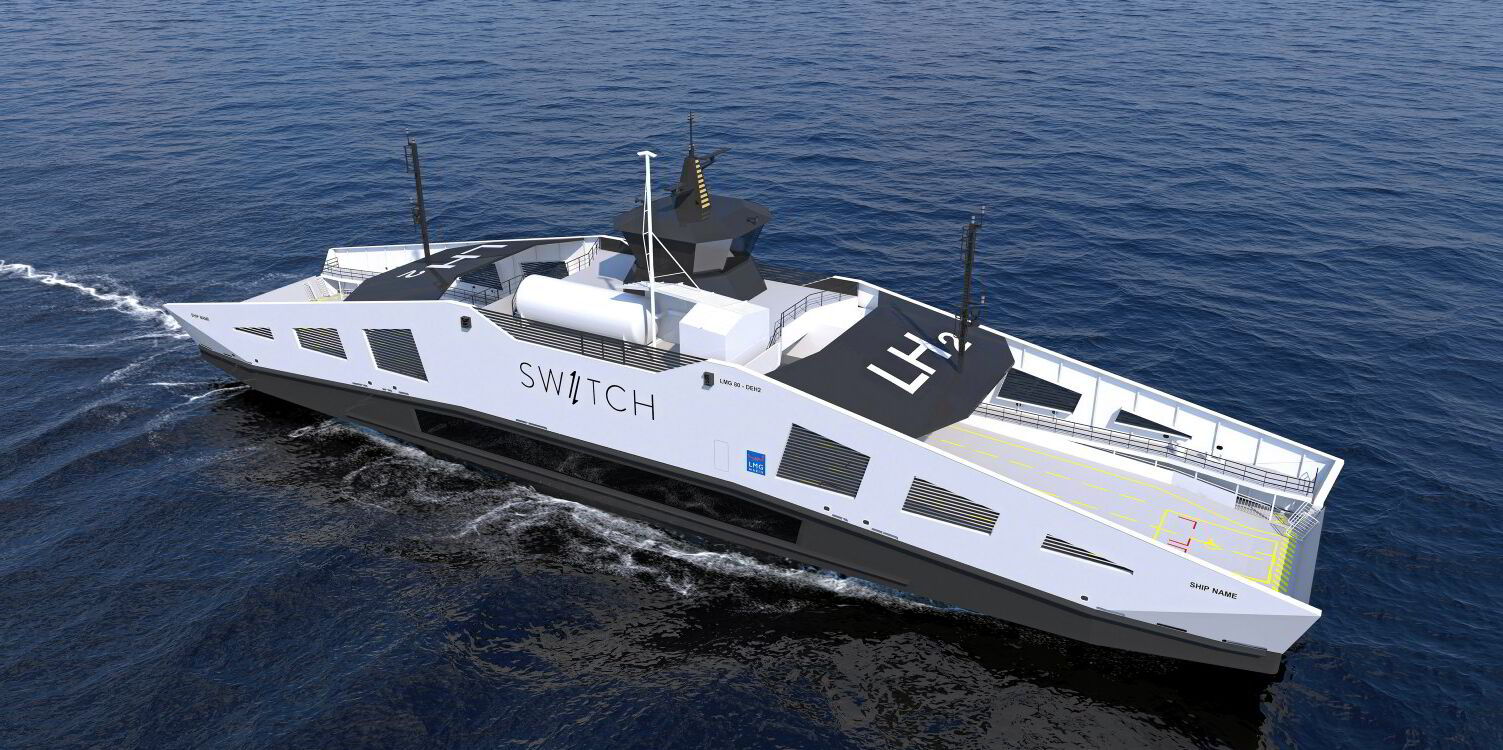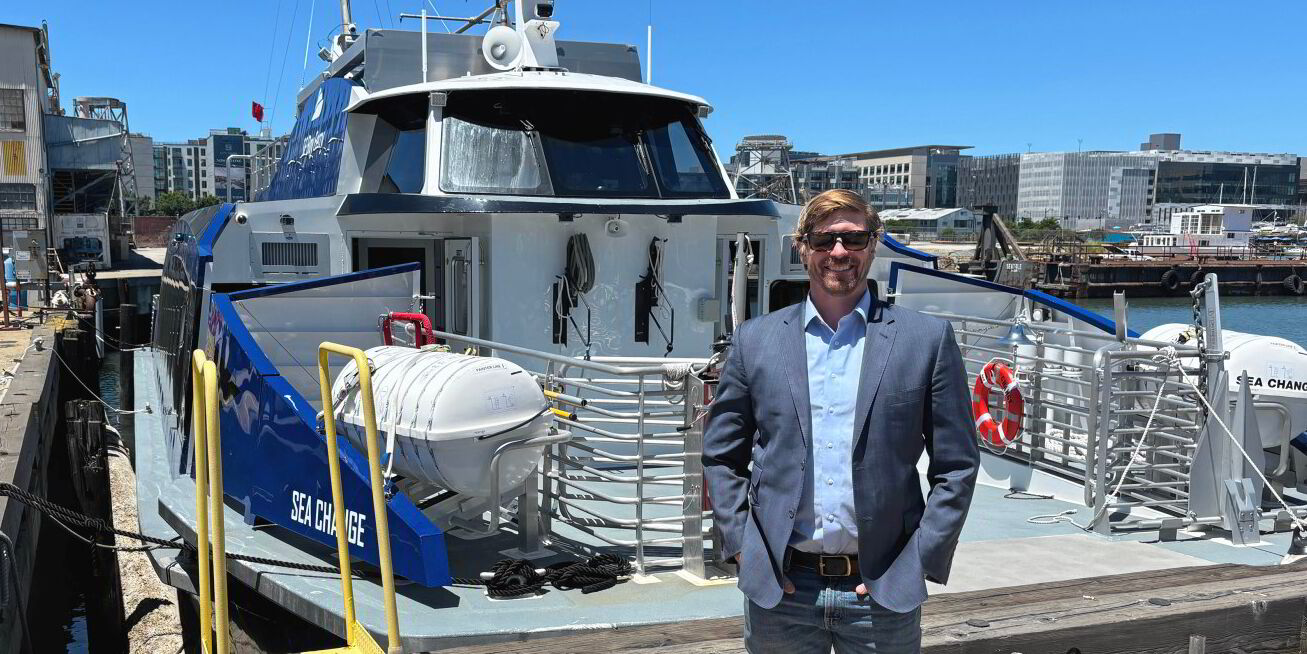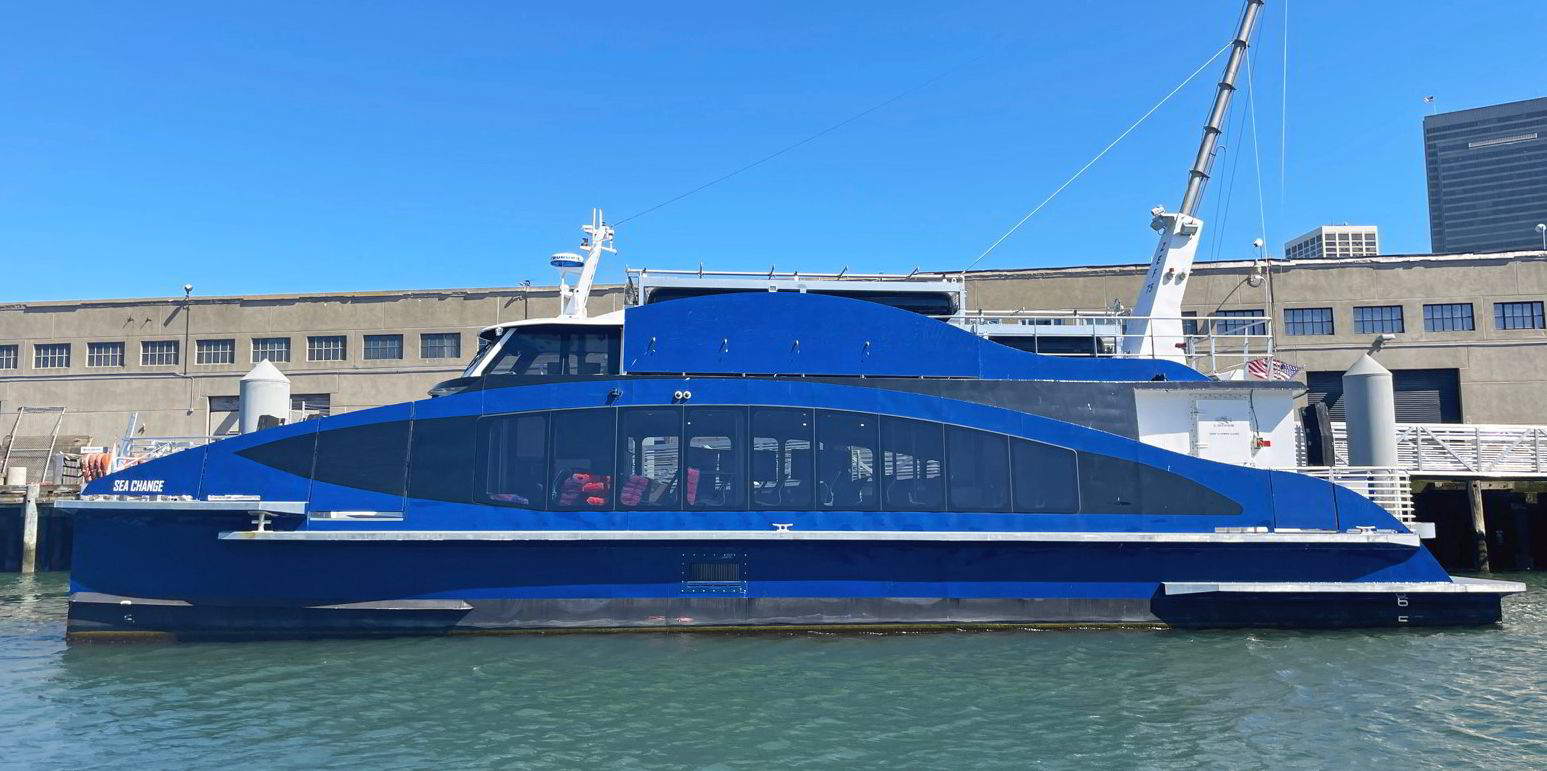Switch Maritime is gearing up to order the first hydrogen-powered ropax to be built in the US.
The US company, which launched operation of a pioneering passenger ferry in San Francisco in July, said it will use a design already approved for use in Norway for the 80-car, 300-passenger vessel, which will run on liquefied hydrogen (LH2).
It plans to order the ferry in collaboration with Norwegian engineering firm LH2 Shipping and designer LMG Marin.
Chief executive Pace Ralli couched the order as part of Switch’s role at the forefront of the US maritime energy transition as the company looks to other vessel types that are ripe for hydrogen fuelling.
“With rigorous planning, state-of-the-art engineering and support from leading industry partners and the US Coast Guard, we are ready to pioneer zero-carbon LH2 fuelling for heavier, higher-horsepower workboats,” he said.
The ropax design has the approval of classification society DNV, though it will still require work with the Coast Guard to achieve compliance in the US.
“What I like about LH2 fuelling is that it will follow the same IGF Code that applies to cryogenic LNG fuelling of ships in the US, so we have a precedent regulatory framework to work from,” Ralli said, referring to the International Code of Safety for Ships Using Gases or Other Low-flashpoint Fuels.
The ropax will have a service speed of 14 knots (26 km/h) and will require weekly fuelling by truck.
The design is based on Norled’s MF Hydra (built 2021), the world’s first hydrogen-powered ferry.

Switch did not say where it will order the vessel, but a US yard will be required for a ferry service in the country.
The company began operations of the 75-passenger Sea Change (built 2021) in July in the first hydrogen-fuelled ferry service in the US. It operates in the San Francisco Bay Ferry system.
The hybrid Sea Change runs on gaseous hydrogen and features 600 kW of electric motor propulsion.
Switch said it is working on a 150-passenger catamaran for San Francisco Bay Ferry, which would also use compressed gaseous hydrogen in its fuel cells.
It plans to reveal the design in the first quarter of next year.
For larger vessels like the planned ropax, the company is looking to liquid hydrogen.
Switch said that while it supports all zero-emissions vessel technologies, it has focused on hydrogen because it is viable where battery-only solutions fall short.
“Generally, hydrogen as a fuel source can support greater range and power requirements due to its high energy density,” the company said, although hydrogen has lower energy density than other low-carbon fuels.
“Additionally, it simplifies zero-emissions vessel operations by eliminating the need for fixed shoreside charging infrastructure, allowing for fuelling through established truck-to-ship or ship-to-ship practices.”




